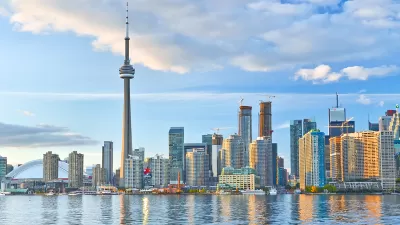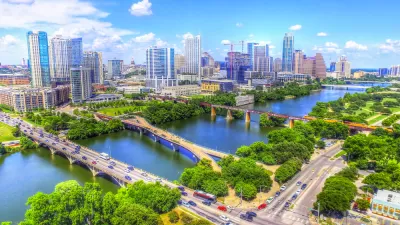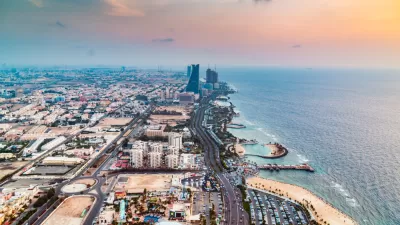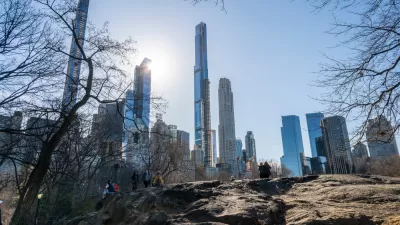No skyline in North America has changed as drastically as Toronto’s in recent decades. A slate of new skyscraper proposals, called a “skyscraper race” by observers, could continue the trend.

Developer Pinnacle International is proposing two supertall skyscrapers—one at 92 stories and other at 105 stories—potentially rising among the two or three tallest buildings in the city.
Pinnacle is seeking an increase in height for both buildings, already approved at heights 12 and ten stories shorter, respectively, at the current site of the Toronto Star building. If approved at the newly proposed heights, the buildings would jump past the approved development of “The One,” proposed for the corner of Yonge and Bloor.
The taller of Pinnacle’s two buildings, called SkyTower, would reach 346 meters (just over 1,135 feet). SkyTower would be the first building in Canada to exceed 100 stories.
A paywalled article by May Warren, linked below, provides more local commentary on the city’s new skyscraper race. As noted by Warren, the city’s famous CN Tower, which reaches 553 meters (1,815 feet) doesn’t qualify for the discussion, though it is much taller than any of the buildings reported here.
“The CN Tower doesn’t technically count as a building, he added. According to the Council on Tall Buildings and Urban Habitat, to be considered a building at least half of its height must be occupiable. Telecommunications or observation towers don’t make the cut,” writes Warren.
Toronto has long outpaced all other North American cities in the scope of skyscraper construction. Planetizen documented Toronto’s development pace with articles in 2015 and 2012.
FULL STORY: In the race to build Toronto’s first ‘super tall’ skyscraper, a new proposal hits 105 storeys [paywall]

Planetizen Federal Action Tracker
A weekly monitor of how Trump’s orders and actions are impacting planners and planning in America.

Congressman Proposes Bill to Rename DC Metro “Trump Train”
The Make Autorail Great Again Act would withhold federal funding to the system until the Washington Metropolitan Area Transit Authority (WMATA), rebrands as the Washington Metropolitan Authority for Greater Access (WMAGA).

The Simple Legislative Tool Transforming Vacant Downtowns
In California, Michigan and Georgia, an easy win is bringing dollars — and delight — back to city centers.

In These Cities, Most New Housing is Under 441 Square Feet
With loosened restrictions on “micro-housing,” tiny units now make up as much as 66% of newly constructed housing.

Albuquerque’s Microtransit: A Planner’s Answer to Food Access Gaps
New microtransit vans in Albuquerque aim to close food access gaps by linking low-income areas to grocery stores, cutting travel times by 30 percent and offering planners a scalable model for equity-focused transit.

This City Will Pay You to Meet Your Neighbors
A North Kansas City grant program offers up to $400 for residents to throw neighborhood block parties.
Urban Design for Planners 1: Software Tools
This six-course series explores essential urban design concepts using open source software and equips planners with the tools they need to participate fully in the urban design process.
Planning for Universal Design
Learn the tools for implementing Universal Design in planning regulations.
Smith Gee Studio
City of Charlotte
City of Camden Redevelopment Agency
City of Astoria
Transportation Research & Education Center (TREC) at Portland State University
US High Speed Rail Association
City of Camden Redevelopment Agency
Municipality of Princeton (NJ)





























